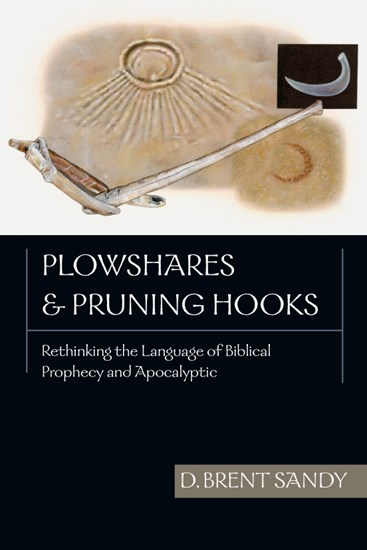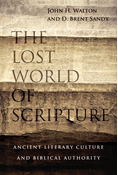
|
Plowshares & Pruning Hooks
paperback
|
- Length: 263 pages
- Dimensions: 6 × 9 in
- Published: October 22, 2002
- Imprint: IVP Academic
- Item Code: 2653
- ISBN: 9780830826537
-
Other Retailers:
Amazon*
Christianbook.com*
*affiliate partner
What are we to make of Isaiah's image of Mount Zion as the highest of the mountains, or Zechariah's picture of the Mount of Olives split in two, or Daniel's "beast rising out of the sea" or Revelation's "great red dragon, with seven heads and ten horns"? How can Peter claim that on the day of Pentecost the prophecy of Joel was being fulfilled, with signs in heaven and wonders on earth, the sun turned to darkness and the moon to blood?
The language and imagery of biblical prophecy has been the source of puzzlement for many Christians and a point of dispute for some. How ironic that is! For the prophets and seers were the wordsmiths of their time. They took pains to speak God's word clearly and effectively to their contemporaries.
How should we, as citizens of the twenty-first century, understand the imagery of this ancient biblical literature? Are there any clues in the texts themselves, any principles we can apply as we read these important but puzzling biblical texts?
D. Brent Sandy carefully considers the language and imagery of prophecy and apocalyptic, how it is used, how it is fulfilled within Scripture, and how we should read it against the horizon of our future. Clearly and engagingly written, Plowshares and Pruning Hooks is the kind of book that gives its readers a new vantage point from which to view the landscape of prophetic and apocalyptic language and imagery.
"With every new major turn of events in the Middle East, many Christians scramble for their Bibles and seek to link the prophecies of the past to the events of the present. Brent Sandy has provided for both the average Bible reader and the serious student of Scripture some careful thinking on how to approach these prophetic texts that so intrigue them. Readers will find Plowshares and Pruning Hooks both balanced and challenging. They may not agree on every point, but all of us can appreciate the call for a consistent and careful approach to prophetic texts. This book opens the door for laymen and scholar alike to a serious study of prophetic literature and its value as part of the Word of God."
"Sandy's book reflects insights gained over long years of careful research. His investigation of the use of imagery, metaphor and stylized language in connection with prophetic literature provides a much-needed correction and direction to a field that is too often plagued by speculative excesses. His command of the subject is ably demonstrated by his own use of imagery in presenting his observations and evidence of the data. This is not just another book on prophecy. It is a groundbreaking proposal that invites further scrutiny from readers of all persuasions. Geared for a general audience, laymen, pastors and scholars alike will nonetheless profit from its balanced presentation. It will need to be consulted by any serious reader of the Scriptures."
"Timely, engaging, probing, carefully researched and faithful to the biblical text, Plowshares and Pruning Hooks will be helpful reading for students, biblical scholars, theologians and pastors alike. Not all questions are answered, but the right questions are raised. While not satisfying all of his readers, Sandy offers considerable guidance for the beginning student and provides fresh insights for the seasoned scholar. This comprehensive exploration of the language of prophecy and apocalyptic will prove to be valuable for many."
"Luther is reported to have said that the prophets have a 'strange way of talking.' Anyone who has read Isaiah or Daniel closely knows the truth of these words. Brent Sandy helps us to engage the prophets intelligently and avoid sensationalist readings that take us down a road that obscures God's message. I will recommend this book to all my students."
"This book represents the fruition of Sandy's many years of careful study and thinking on the commonly misunderstood topic of prophetic language. I have benefited from his insights over the years and am delighted to see his work finally made available to a wider audience. Students of the Bible who have been baffled by the prophetic texts of Scripture and their many interpretations will find great relief and helpful guidance in this book. Sandy's presentation makes excellent use of illustrations from the English language to guide the reader in understanding the language of prophecy. The resulting explanations enable the reader to bypass popular sensationalism and reclaim the biblical prophecies as God's Word."
CONTENTS
List of Figures
Preface
Acknowledgments
1. What Makes Prophecy Powerful?
2. What Makes Prophecy Problematic?
3. How Does the Language of Prophecy Work?
4. How Does the Language of Destruction and Blessing Work?
5. How Does the Language of Apocalyptic Work?
6. How Have Prophecies Been Fulfilled?
7. How Will Prophecies Be Fulfilled?
Conclusion
Appendix A: Common English and French Metaphors
Appendix B: Language of Blessings and Curses
Appendix C: End-Times Imagery in the New Testament
Notes
Subject Index
Scripture Index




